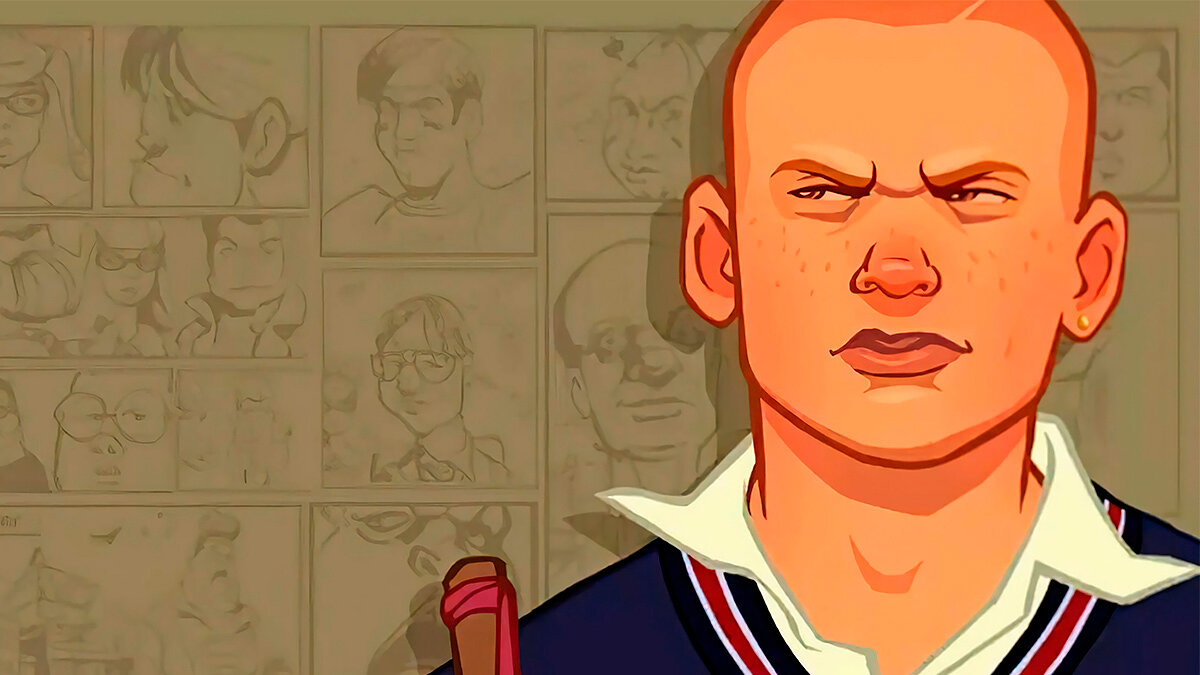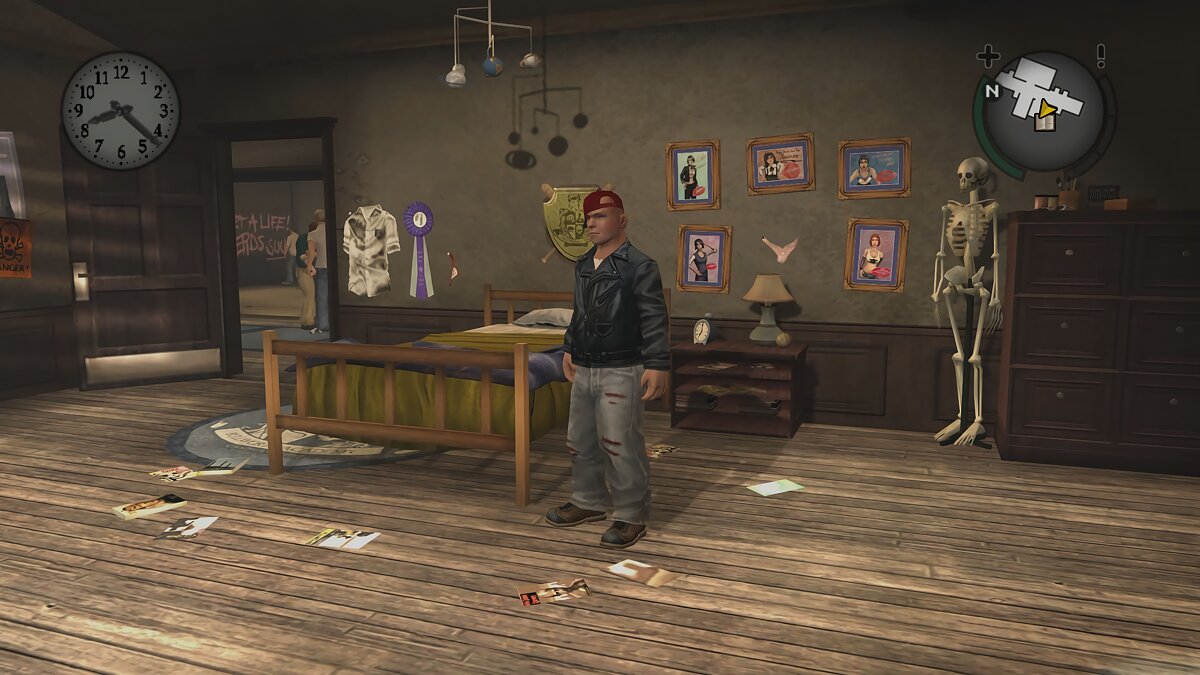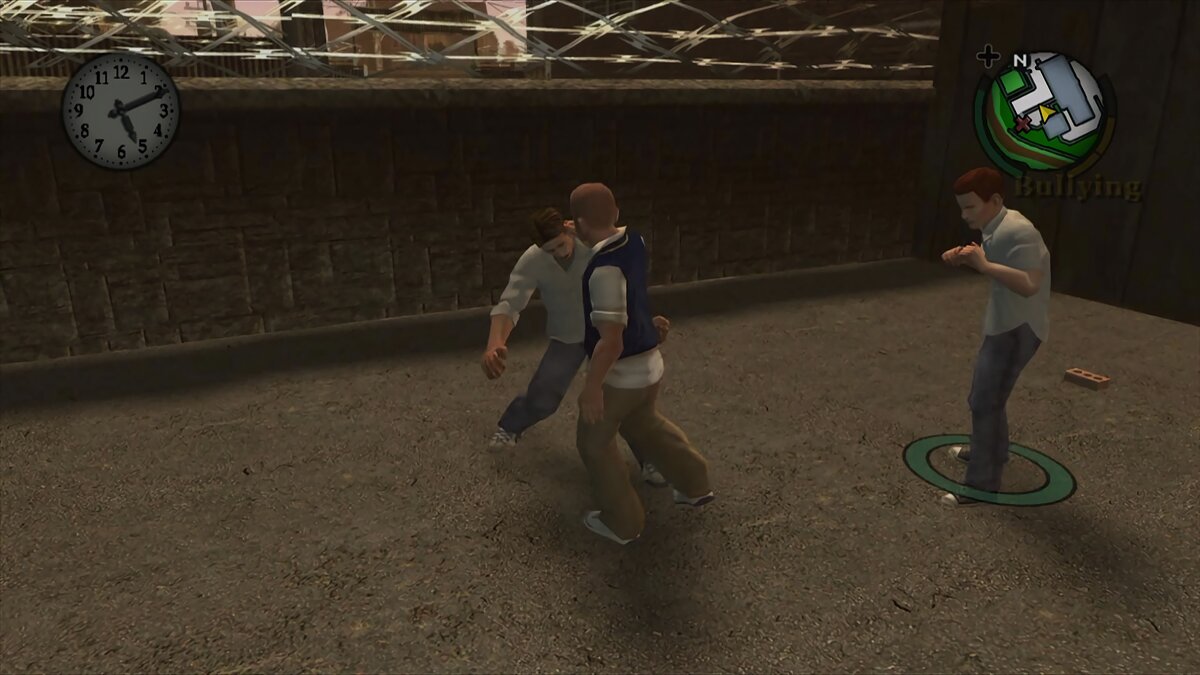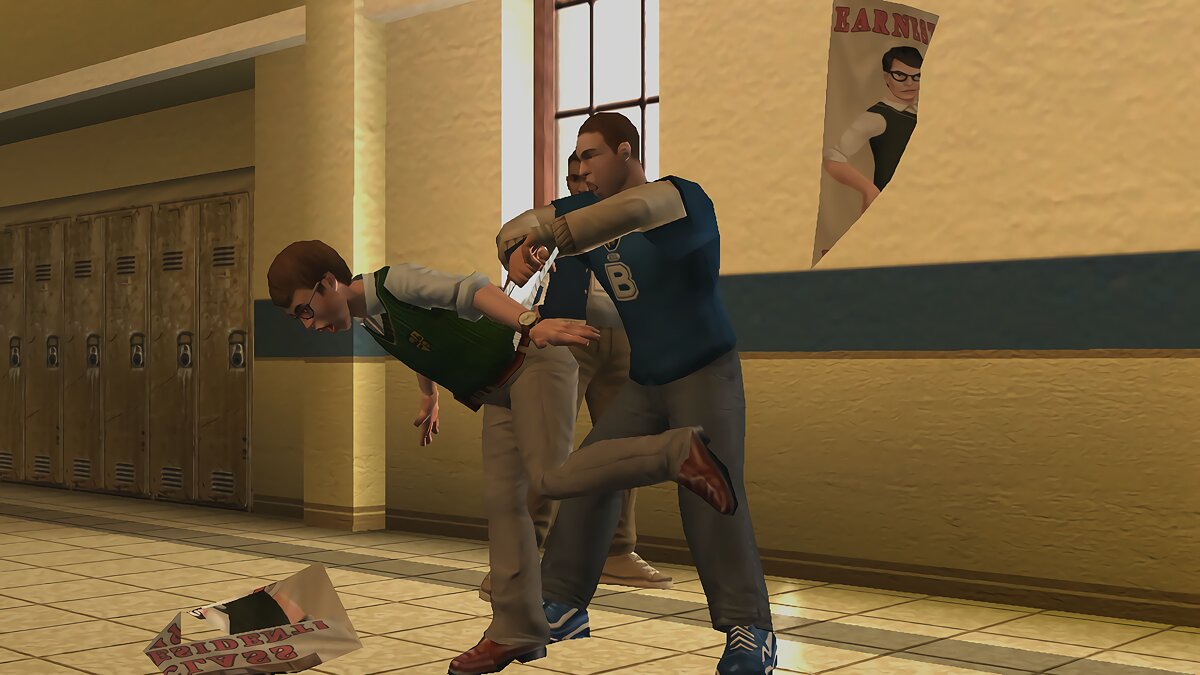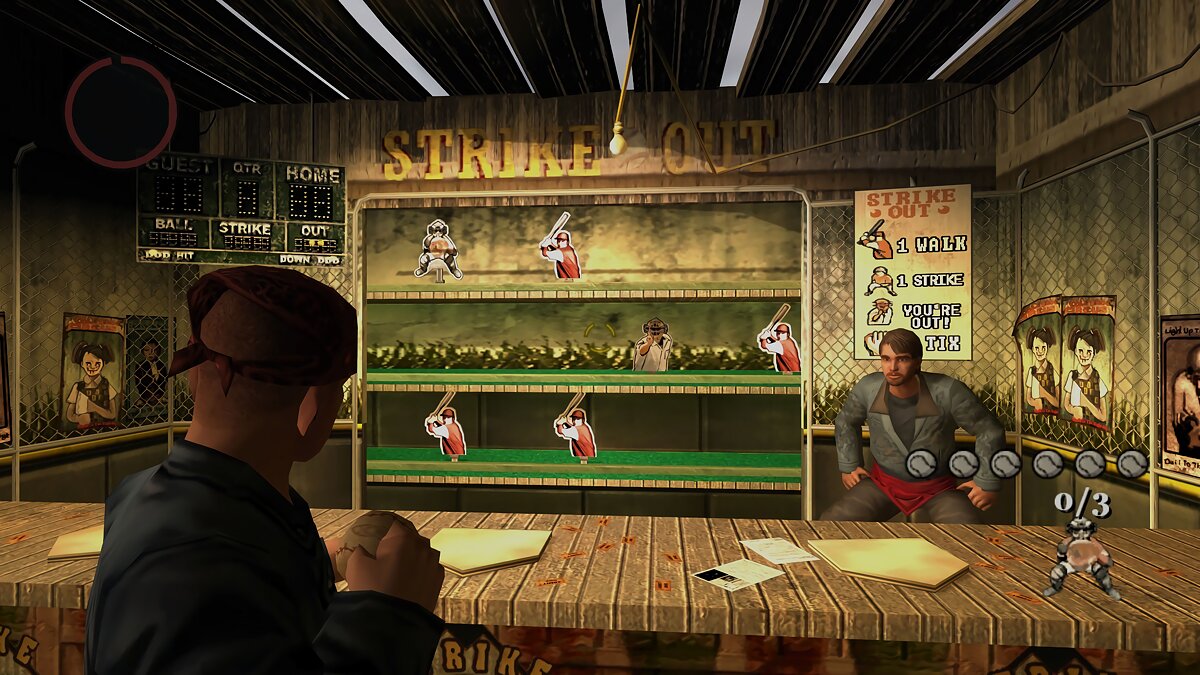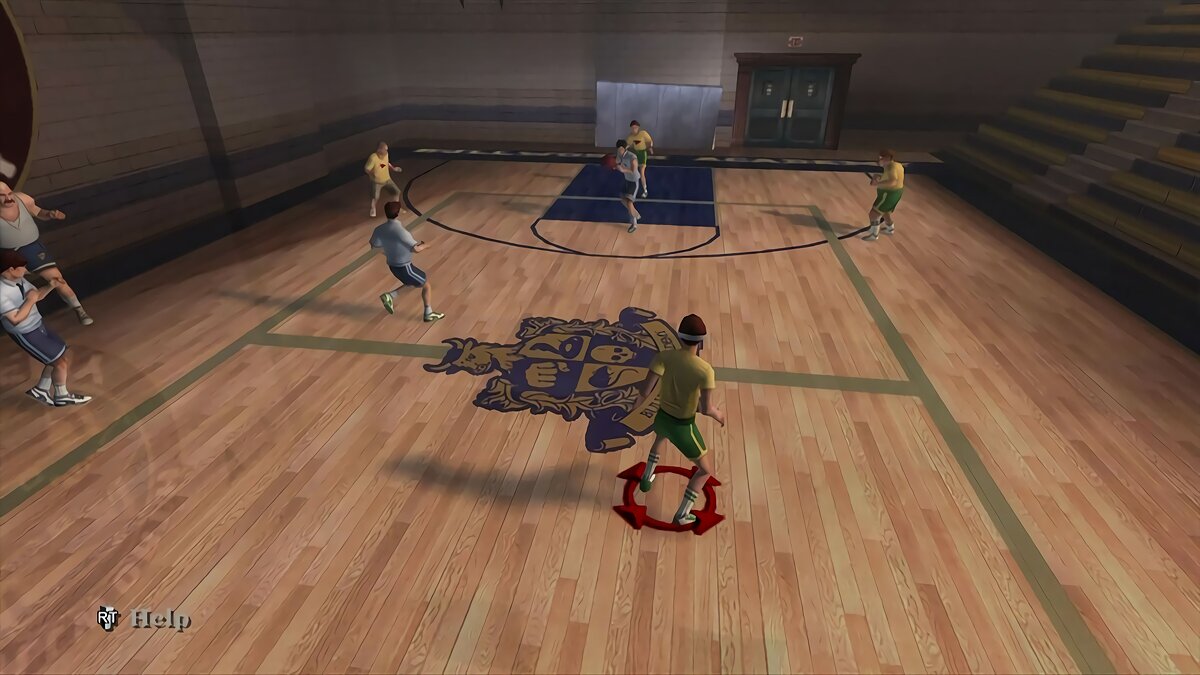Released in 2008, the third-person adventure action game Bully: Scholarship Edition is an enhanced and expanded edition of the 2006 Bully. It tells the story of a troubled teenager, Jimmy Hopkins, experiencing all the difficulties of growing up. To become an informal leader at school, the player needs to study, explore the world, court girls, and fight for influence with other students at Bullworth Academy for troubled teenagers.
Over two years, Rockstar transferred Bully to a new game engine, updated the graphics, and added activities, mini-games, and items to the inventory. Eight new missions and a couple of new characters appeared while the main plot and additional quests remained unchanged. Bully borrows mechanics from older Rockstar games, but it has its unique style and atmosphere, and its main mechanics, including complete freedom of action, work in some ways better than in GTA. The absence of weapons does not diminish the variety of gameplay but rather emphasizes its uniqueness.
Game world
Bully takes place in the fictional town of Bullworth, located somewhere on the US coast. As is customary at R*, it consists of several districts. The city center has offices, shops, a pharmacy, and a cinema. The next location is an elite district with exquisite mansions, a church, a park, and attractions. There is an industrial zone with factories and warehouses. There is also a depressed area of low-income families, where gangs roam even during the day. All places are designed with art design in mind and reflect the characteristic differences between the social layers of the citizens living there.
The main location of the game, where most of the events of Bully take place, is the Bullworth Academy High School. It offers many classrooms, a dining room, a library, a gym, and a boarding house for the teenagers to stay in permanently. The school is more detailed than other locations, you can look into every corner. Some locations in Bully are initially closed and they open as you progress through the story. You can explore the world on a skateboard, bicycle, or foot.
The world of Bully appears as a ring city with low-rise buildings, typical for small American towns, and a minimum of natural landscapes. There is also a change of seasons that affects the game world. Exploring the environment involves interacting with NPCs, from whom you can get tasks or valuable information. If you’re lucky, you can find some useful items for battle, like a first aid kit or a firework, and a change of clothes for disguise. A lot of such things improve the gameplay and simplify the completion of tasks.
Technical improvements
The switch from RenderWare to Gamebryo allowed R* to significantly enhance the graphics and diversify the visual effects, which is most noticeable in the following aspects:
- More detailed and sharp textures of the surrounding world, characters, and objects;
- Advanced character animation system and physical model due to the support of 60FPS mode, increased detail of the characters' appearance;
- Better color reproduction due to improved contrast and brightness, and the increased draw distance has positively affected the overall perception of the world;
- A new particle system (smoke, fire, and water), lighting, and shadows have made the picture closer to reality;
- Support for widescreen monitors has allowed the game to be launched without image distortion on modern monitors and TVs;
- In Bully, the audio files were subject to significant compression, but in the Scholarship Edition, they were substituted with versions of superior quality;
- Based on complaints, they rebalanced the game mechanics and adjusted the overall balance and difficulty of some tasks;
- Improved character control, making it smoother in movement and more responsive in combat.
- Fixed known bugs and errors at that time.
Backstory of events
The plot does not delve too far into the past, broadly explaining that before Jimmy arrived at the Academy, he faced family problems. His parents’ divorce and his mother’s complicated personal life, who often changed partners, led to Jimmy beginning to feel lonely and rejected both at home and at school. Strong experiences appealed to a rebellious character, disobedience, and stubbornness. Constant conflicts and transitions from one school to another established his reputation as a troubled teenager.
The player sees how at the beginning of the game, Jimmy is about to break the law, which pushes his mother and new father to decide to send the boy to Bullworth. In the parents’ view, the stringent discipline and unique educational approach of the private school are beneficial. They believe these factors will assist Jimmy in navigating the challenges of transitioning into adulthood and adapting to societal norms. However, this does not mean that Jimmy will avoid punishment — he will have to complete all the main tasks, including those related to studying.
Plot and characters
The story of Bully addresses themes of social adaptation and the problems teenagers face, as well as the process of forming relationships in a school. On his journey, Jimmy is left alone to deal with a multitude of troubles, forced to earn authority, recognition, and respect, and overcome bullying, and social pressure. Due to the violence and bullying, the game’s release sparked public debates about the influence of video games on the younger generation and led to campaigns to ban Bully in some countries.
In Bully, unlike other Rockstar games, all attention is paid to interacting with characters, differing in character and type, and the ability to find a common language in the limited space of a school. Among Jimmy’s peers, there is a best friend, a sworn enemy, a reliable ally, a traitor, and a deceiver. Among adults, one can see stereotypical images of everyone’s favorite teacher, a charismatic eccentric, and a strict director.
Scholarship Edition received new plot content, which is not in the original Bully. Six new characters (town residents, students, teachers) were added with their characters and backgrounds, with several unique tasks and mini-games. Added eight new major missions at Christmas time, in which the main character participates in snow battles, helps Santa Claus, destroys mailboxes, and so on. Minor plot adjustments increased the role of successful learning, participation in school events, and exploration of the world, which also affects relationships with other characters.
In addition to ordinary NPCs in the game, there is a cliques (faction system): Nerds, Bullies, Preppies, Greasers, Jocks, and Townies, which form a hierarchy. Each of them is interested in implementing their goals, fights for influence, and conflicts with other groups. Jimmy can use these contradictions and play on them to establish his order in school. Depending on the player’s actions, factions can become either friends or enemies of Jimmy, which will affect both the completion of missions and actions in the free mode of the game.
Singleplayer game
Bully accurately reflects the daily routine in the Academy, where discipline is paramount. Jimmy is obliged to attend classes and can act freely only between them until the next bell rings. Every outing beyond the school must be well thought out, avoiding encounters with duty officers and unnecessary conflicts with school groups. The game designers have tried to make the player not feel like the main character and not expect special treatment.
Classes, presented as mini-games, include disciplines such as grammar, mathematics, drawing, and physical education. In the Scholarship Edition, additional lessons such as biology, music, and geography were introduced, and the assortment of mini-games was broadened. Mastery in English enables Jimmy to influence other characters more effectively, and engaging in athletic activities enhances his physical attributes. In music class, you can play various musical instruments. Completing geography lessons will simplify navigation around the city.
Bully lacks complex missions, similar to those encountered in GTA. And Scholarship Edition did not change this approach. You can fight with cliques, deliver items or messages for NPCs, outplay athletes in dodgeball, arrange bicycle races, kiss girls, and even go on romantic dates. All for the sake of moving up the social hierarchy in a school for troubled teenagers.
All the time outside of lessons is given to secondary tasks and world exploration, while plot quests are separate. They are divided into stages and will require the player not only to click on the keyboard but to think everything over, react quickly, and not shy away from playing hide and seek.
The combat system in Scholarship Edition remained arcade, offering the player to shoot from a slingshot, throw jelly beans, and launch fireworks. This is much more interesting than waving fists in fights, where Jimmy could be overpowered by a group of peers or one rampaging adult. Jimmy can resist only within the scales of health and stamina. As you progress through the plot, new opportunities appear, such as tear gas and paintball pellets. The inventory system plays an important role and the use of correct items will simplify the passage of the game and battles, adding tactics to the gameplay.
A full-fledged multiplayer has not appeared, but competitive mini-games for two players on one system have been added: bicycle racing, wrestling competition, hide and seek — where players need to show the best time, result, or score more points. In the version of the game for Xbox 360, achievements appeared. The Wii-version of the game has learned to control movement and targeting with the Wii Remote and Nunchuk controllers.
Release dates
- Wii — March 4, 2008
- Xbox 360 — March 4, 2008
- PC — October 21, 2008
- PlayStation 3 — December 18, 2012 (original Bully re-released for PS3)
- iOS и Android — December 8, 2016 (adapted for portable devices)
Minimum system requirements
- OS: Windows XP / Vista
- Processor: Intel Pentium 4 / AMD Athlon 64 with a clock speed of 3.2 GHz or more
- RAM: 1.5 GB
- Graphics card: compatible with DirectX 9.0c and shader 3.0 support; Nvidia 7600 or ATI Radeon X1600
- DirectX: version 9.0
- Hard drive: 5 GB of free space
- Sound card: DirectX 9 compatible
- Peripherals: keyboard, mouse, Xbox 360 gamepad
Recommended system requirements
- OS: Windows XP / Vista
- Processor: Intel Core 2 Duo / AMD Athlon 64 X2 with a clock speed of 2.0 GHz or more
- RAM: 2 GB
- Graphics card: compatible with DirectX 9.0c and shader 3.0 support; Nvidia 8600 GT or ATI Radeon HD 2600
- DirectX: version 9.0
- Hard drive: 5 GB of free space
- Sound card: DirectX 9 compatible
- Peripherals: keyboard, mouse, Xbox 360 gamepad










